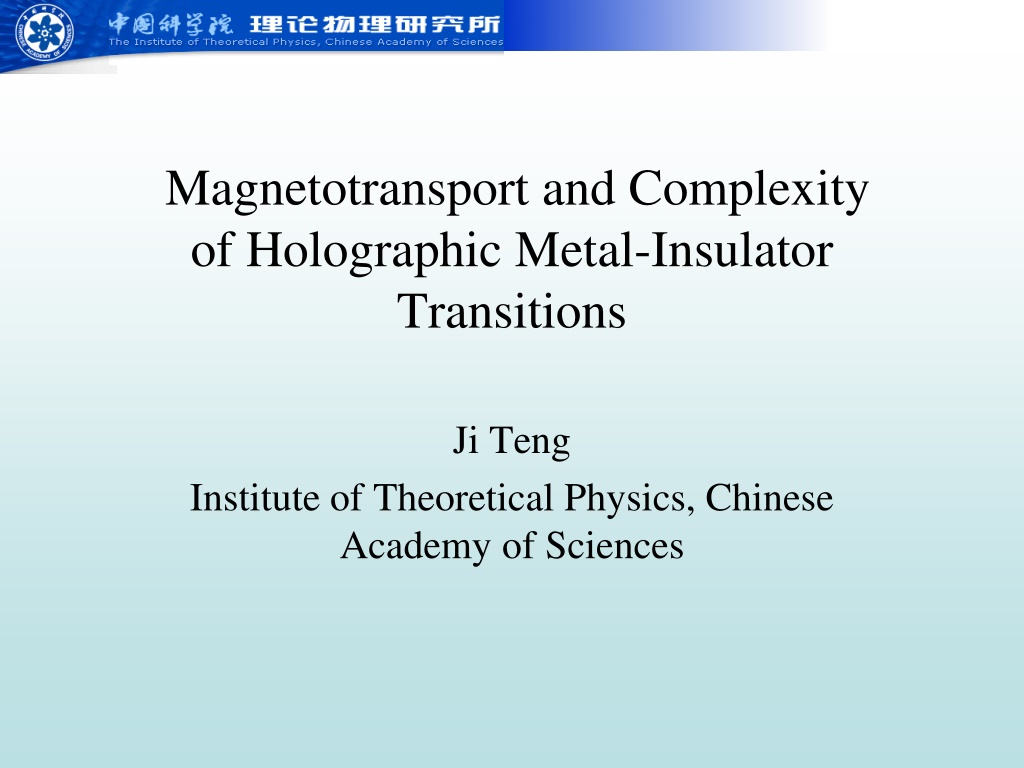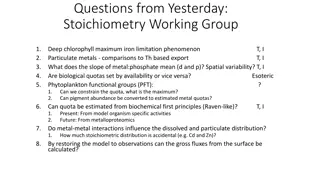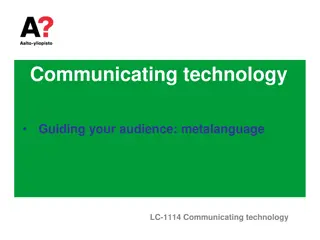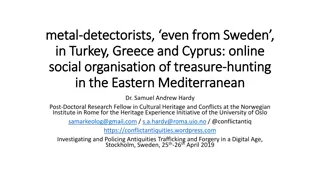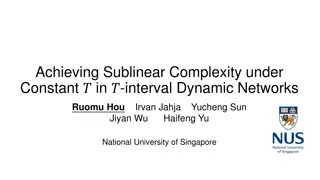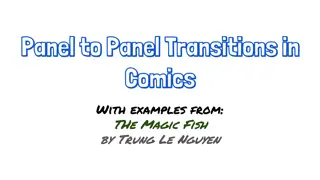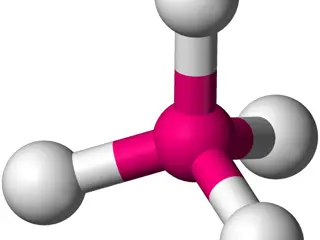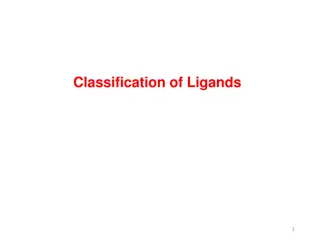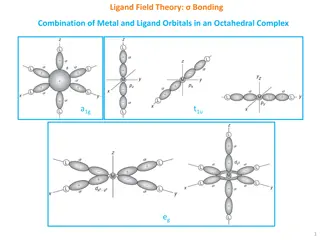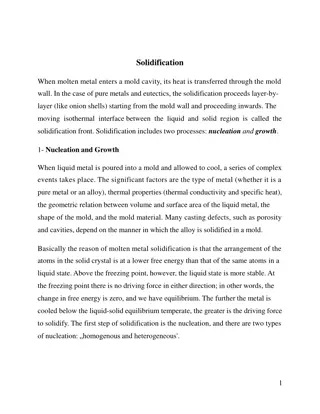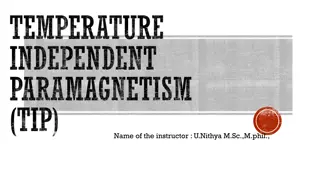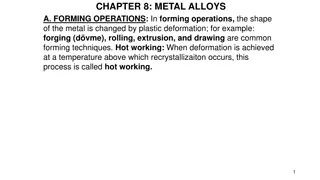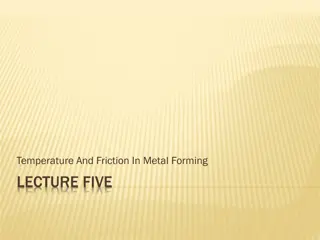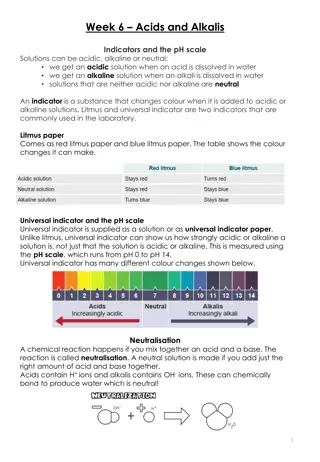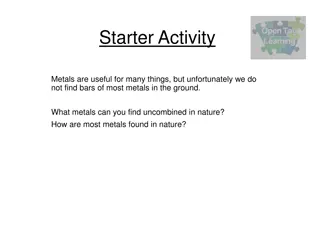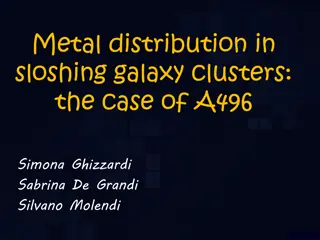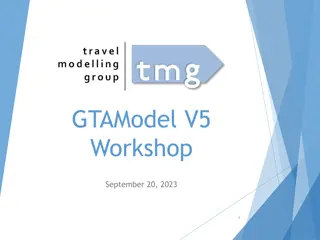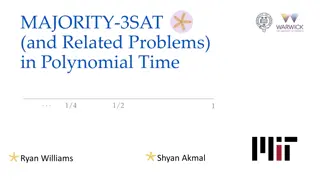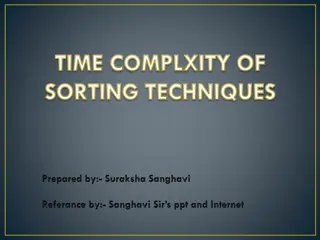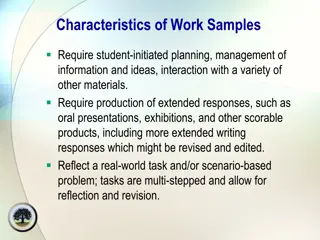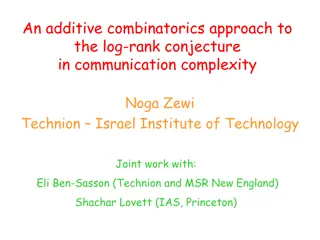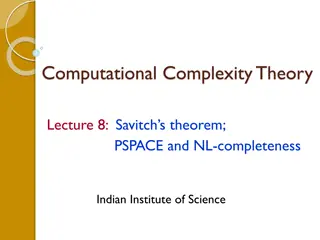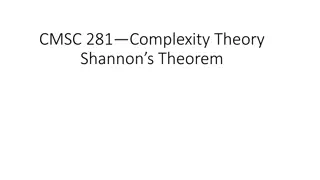Complexity of Holographic Metal-Insulator Transitions in Magnetotransport
The mechanism of metal-insulator transition is a fundamental yet complex problem in condensed matter physics. Various theories attempt to explain this transition, such as critical points, disorder-driven transitions, and interaction-localization approaches. A holographic model reveals key insights into the transition triggered by certain couplings. Understanding this theory further can uncover generic features and phenomena. The resistivity behavior also demonstrates distinct insulating and metallic characteristics based on specific parameters.
Download Presentation

Please find below an Image/Link to download the presentation.
The content on the website is provided AS IS for your information and personal use only. It may not be sold, licensed, or shared on other websites without obtaining consent from the author. Download presentation by click this link. If you encounter any issues during the download, it is possible that the publisher has removed the file from their server.
E N D
Presentation Transcript
Magnetotransport and Complexity of Holographic Metal-Insulator Transitions Ji Teng Institute of Theoretical Physics, Chinese Academy of Sciences
Background The mechanism of metal insulator transition is one of the oldest, yet one of the fundamentally least understood problems in condensed matter physics. A good metal and a good insulator are very different physical systems, and can be characterized by quite different elementary excitations. Many theories have been proposed to understand metal-insulator transition, such as MIT as a critical point, Scaling theories of disorder- driven transitions, Order-parameter approaches to interaction-localization. Mechanisms toward the MIT remain controversial and somewhat incomplete[1112.6166] In the spirit of EFT, a minimal holographic model of disorder-driven MIT was proposed[1601.07897,1602.01067]. There are still some issues that have not been understood well. Given the rich phenomenological features of this set up, it is worth understanding the theory further and uncovering some generic features.
Holographic model The consistency of a theory imposes some constraints on the couplings[1601.07897] and ? ? < 0 plays a key role in triggering a metal-insulator transition. The background solutions:
DC Transport and Constraint DC conductivity and resistivity in terms of horizon data Consider the clean limit ? 0 and parameterize the coupling Y and V: At 0th order:
DC Transport and Constraint Include the leading correction coming from momentum dissipation ??? 0 ? 0 for a general choice of B and Given a generic constraint on Y, without referring to the non-linear details of the coupling functions.
MIT and Scaling Behavior Consider high T limit ? ? < 0 (k>0) has a dramatic impact on MIT a critical charge density: ??= ?2+ ??2/2 ? < ??:???decreases with T increased, displaying insulating behavior ? > ??:??? increases with T increased, displaying metallic behavior MIT by dialing charge density MIT can be also triggered by increasing magnetic field B and disorder strength
MIT and Scaling Behavior The resistivity scales with a single parameter: +: insulating behavior -: metallic behavior 3 12 2 2??|?2 ??2| with the scaling parameter ?0: ?0= The ???T curves for different ? can be made to overlap by ?0along T axis, yielding a collapse of the data onto two curves: an insulating behavior branch for ? < ??and a metallic branch for ? > ?? Near MIT : The metallic and insulating curves are mirror symmetry: mechanism responsible for transport in insulating and metallic phases are related.
MIT and Scaling Behavior The collapse of resistivity data into two separated holds for broad interval temperatures. MIT by dialing charge density at B=0 ???T curves for different ? can be made to overlap along T axis with the scaling parameter ?0.
MIT and Scaling Behavior The collapse of resistivity data into two separated holds for broad interval temperatures. MIT by dialing magnetic field at Landau-Level filling factor =? ?= 3/2 ???T curves for different ? can be made to overlap along T axis with the scaling parameter ?0.
MIT and Scaling Behavior The collapse of resistivity data into two separated holds for broad interval temperatures. MIT by dialing disorder at ? = 0. ???T curves for different ? can be made to overlap along T axis with the scaling parameter ?0.
MIT and Scaling Behavior The metal-insulator transition induced by charge density, magnetic field and disorder. The collapse of resistivity data into two separated holds for broad interval temperatures. Our holographic results agree qualitatively with the experimental observation in some two dimensional samples and materials.
Phase Diagram All phases share the same symmetries of the underlying theory, and thus beyond a simple Ginzburg-Landau description. Is there any other probe that is able to characterize different phases? (a) good metal (b) incoherent metal (c) bad insulator (d) good insulator
Phase Diagram Specific heat Charge susceptibility (a) good metal (b) incoherent metal (c) bad insulator Complexity of formation (d) good insulator
Conclusion Holography as a Theoretical Laboratory (a) We propose a generic constraint on Y, without referring to the non-linear details of the coupling functions, that is ? ? > 0, 1/6 ? (0) 0. (b) We discuss the holographic MIT induced by charge density, magnetic field and disorder. Universal scaling behavior is uncovered, which agrees qualitatively with the experimental observation in some two dimensional samples and materials.
Open questions (a) To extend our studies to more complicated holographic systems which break translations without retaining the homogeneity of the background. (b) So far we limited ourselves to the electric conductivity, it is also worth studying the thermal response and the mechanical response. (c) Despite a lot of work on this model and generalizations, the physical nature of the dual field theories is still not well understood. (d)
